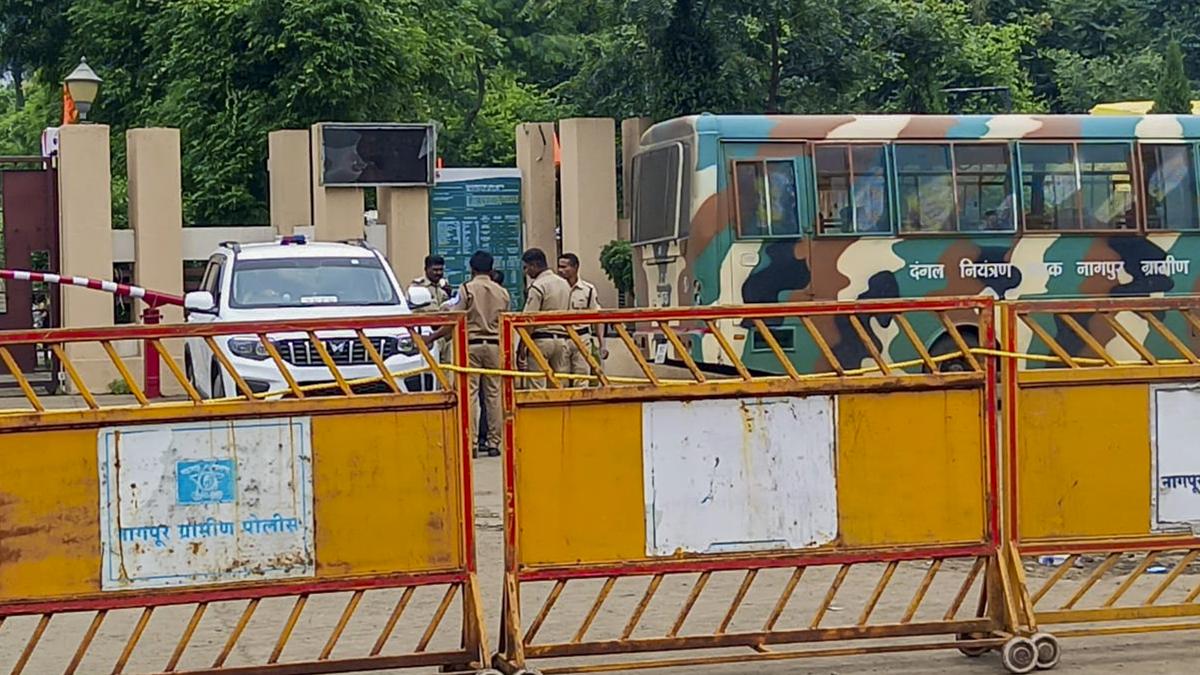ARTICLE AD BOX
Last Updated:September 03, 2025, 07:00 IST
The bureau urges 'a concerted effort from all levels of the police force, starting from policy reforms at the organisational level to a fundamental change in individual behaviour'

The report stresses that transparency, accountability, effective community engagement, and professional conduct are critical for enhancing the public image of the police and restoring community confidence. Representational image
The Bureau of Police Research & Development (BPR&D), under the Ministry of Home Affairs, has released a comprehensive list titled “Negative List of Actions Detrimental to the Police Image", outlining practices and behaviours that damage the image of Indian policing.
BPR&D has prepared this list in compliance with a recommendation of the DGsP/IGsP Conference 2024.
The document highlights systemic shortcomings, misconduct, and insensitive practices that erode public trust, undermine credibility, and weaken the relationship between law enforcement agencies and the communities they serve.
An official communication sent to the Director Generals of Police of all States and Union Territories drew attention to the 2024 conference recommendation, which had noted: “In the context of improving police image, experts should be consulted on the formulation of a negative list of actions detrimental to the police image." Acting on this, the BPR&D prepared the report after consulting experts and incorporating inputs from a committee constituted for the purpose.
Aggressive and Insensitive Behaviour
The report devotes special attention to the way police interact with the public, warning that aggressive or insensitive behaviour leaves a lasting impact on public perception.
The document says that “use of inappropriate language and aggressive behaviour towards the public, complainants, and witnesses", along with “lack of empathy in dealing with victims, particularly in sensitive cases such as gender-based violence or minority rights violations", are among the most visible factors that tarnish the police image.
It also warns that failure to provide clear and helpful information, discriminatory practices based on race, ethnicity, or personal characteristics, and “displaying an authoritarian attitude rather than a service-oriented mindset" contribute heavily to alienation and mistrust.
The report further highlights “egotistic self-promotion or arrogance on social media" as a modern-day practice that undermines credibility and professionalism in policing.
Abuse of Power
The report identifies abuse of authority as one of the most damaging factors for the police image. It cites “delays in the registration of FIRs, investigations", “misuse of preventive measures", and even “registering false cases" as practices that continue to erode public trust. Suppression of evidence and forcing compromises in cognisable offences, it notes, create a perception of bias and unfairness.
Another major concern is the “use of excessive force against peaceful protests" and “selective enforcement of laws, particularly in cases involving influential members of the public". The tolerance of corruption within the system, coupled with “undue considerations and bias in postings, transfers", further weakens institutional credibility and fuels allegations of political pressure on policing.
Police Efficiency and Delays in Emergencies
The report also highlights gaps in efficiency that directly affect the daily lives of citizens. It observes that “delayed response in emergencies" and “delays in attending to visitors at police stations" often leave the public frustrated and alienated.
The absence of standardised protocols and poor adherence to Standard Operating Procedures (SOPs) were also cited as reasons for inconsistent behaviour. According to the report, such lapses contribute to the perception that police services are unreliable and unresponsive.
Why the List Was Needed
The introduction to the report stresses the urgency of addressing these issues. It states: “A positive perception on law enforcement agencies is integral to the functioning and effectiveness of the police in maintaining law and order. A persistent negative image of the police in public consciousness can be, largely attributed to perceived instances of unethical conduct including corruption, and misuse of power."
The report points out that lack of transparency, weak communication, and highly visible misconduct have combined to create an image of the police as a coercive force rather than as an institution dedicated to public service and justice.
Problem Areas Identified
The list names several recurring issues: deployment of unfit or untrained personnel, discourteous behaviour towards subordinates, coercion of staff to perform menial tasks, neglect of crime prevention, failure to address emerging law and order challenges, and overemphasis on personal security at the cost of public safety.
It also reiterates serious abuses of police power, such as delays in FIR registration, misuse of preventive measures, suppression of evidence, registration of false cases, use of excessive force, selective enforcement of laws, tolerance of corruption, and politically influenced postings and transfers.
The report adds that ineffective grievance redressal, lack of transparency in investigations, and inaction against errant personnel have allowed misconduct to normalise. It warns that poor engagement with communities and vulnerable groups has deepened mistrust, while weak media engagement has failed to counter misinformation or negative portrayals.
Concerns over efficiency also appear repeatedly, with delayed emergency responses, inconsistent station-level behaviour, and the absence of SOPs creating public dissatisfaction. The report notes that aggressive language, lack of empathy, discriminatory practices, authoritarian behaviour, and misuse of social media for self-promotion further corrode trust. It also warns against the misuse of uniform and rank for purposes outside policing.
Call for Reforms
The report makes it clear that identifying these issues is only the first step. It states: “The items listed in this document, whether stemming from organizational shortcomings or individual misconduct, constitute a significant threat to the reputation and effectiveness of law enforcement agencies. Such actions may contribute to the erosion of public trust and hinder the police in fulfilling their primary role of ensuring public safety and justice."
It calls for “a concerted effort from all levels of the police force, starting from policy reforms at the organizational level to a fundamental change in individual behaviour". The report stresses that transparency, accountability, effective community engagement, and professional conduct are critical for enhancing the public image of the police and restoring community confidence.

With over 15 years of journalistic experience, Ankur Sharma, Associate Editor, specializes in internal security and is tasked with providing comprehensive coverage from the Ministry of Home Affairs, paramilitar...Read More
With over 15 years of journalistic experience, Ankur Sharma, Associate Editor, specializes in internal security and is tasked with providing comprehensive coverage from the Ministry of Home Affairs, paramilitar...
Read More
- Location :
- First Published:
September 03, 2025, 07:00 IST
News india Selective Action On Mighty, Corruption, Misuse Of Power Hurt Police Image: BPR&D | Exclusive
Disclaimer: Comments reflect users’ views, not News18’s. Please keep discussions respectful and constructive. Abusive, defamatory, or illegal comments will be removed. News18 may disable any comment at its discretion. By posting, you agree to our Terms of Use and Privacy Policy.
Read More



.png)
.png)
.png)
















 1 day ago
7
1 day ago
7








 English (US) ·
English (US) ·